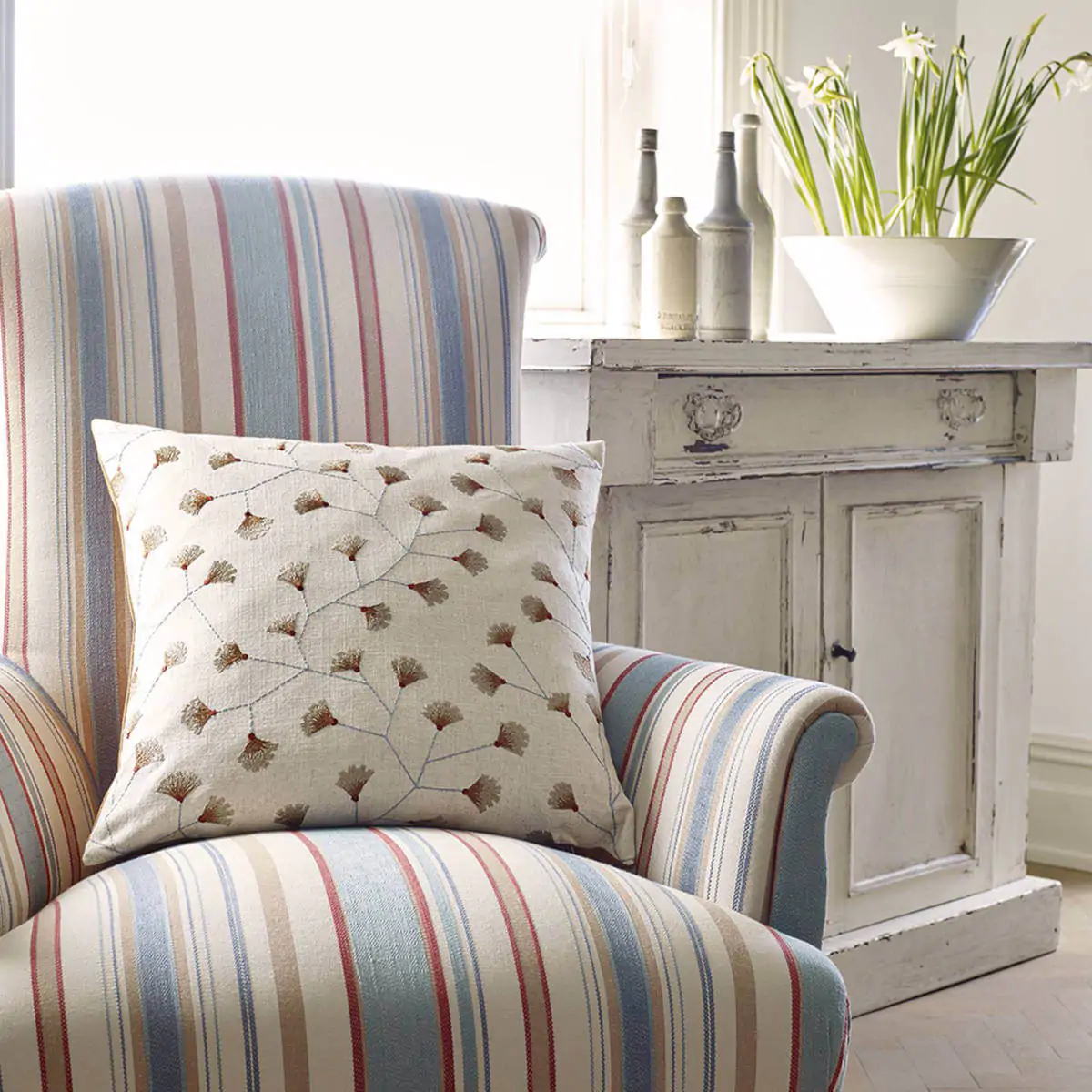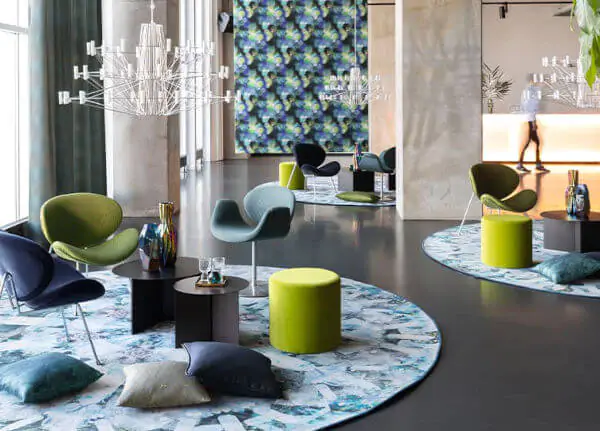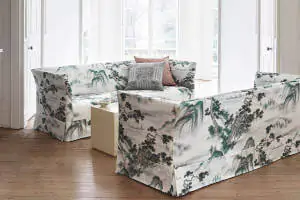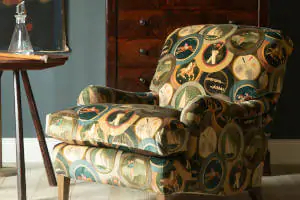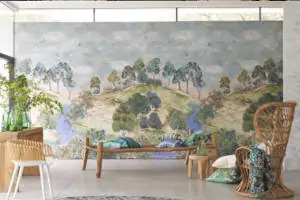Guide to Upholstery Fabric
A Guide to Choosing and Using Upholstery Fabrics
Repairing and re-covering furniture is exciting, it brings a new lease of life to old furniture and can change the style and energy of a room, it is also better for the environment to upcycle or recycle furniture. Choosing an upholstery fabric can be confusing if you are not familiar with the different type of upholstery fabrics not to mention the various technical specifications such as rub tests and fire retardation ratings used in upholstery fabric. Our handy guide is here to help so you can focus on choosing the perfect upholstery fabric.
Fabric Durability
When choosing upholstery fabric you will want to choose a fabric which will stand up to the various stresses and strains placed on it, fabrics used in the home are likely to have less use than those in used in a commercial setting or public building. The first thing to check is whether the fabric is marked as suitable for upholstery, if not then the fabric may not be strong enough for use on furniture and will quickly wear and fray. The next thing to check is whether it marked as decorative, occasional, heavy or contract use (more on this later) and the rub test.
Upholstery Rub Tests: Understanding The Martindale & Wyzenbeek Tests
The main method the textile industry uses for assessing a fabric's durability is a rub test, literally rubbing the surface of the fabric to see how it will stand up to wear and tear.
There are two main rub tests the Martindale Test and the Wyzenbeek Test. The most widely recognised international standard is the Martindale test although the Wyzenbeek test is more common in North America. Since the rubbing methods are different and create different stresses on the fabric you cannot be certain there will be a correlation between the Martindale test rating and the Wyzenbeek scores, simply put some fabrics may be more prone to one test over the other. High quality manufacturers are likely to provide details of both test results in their fabric specifications.
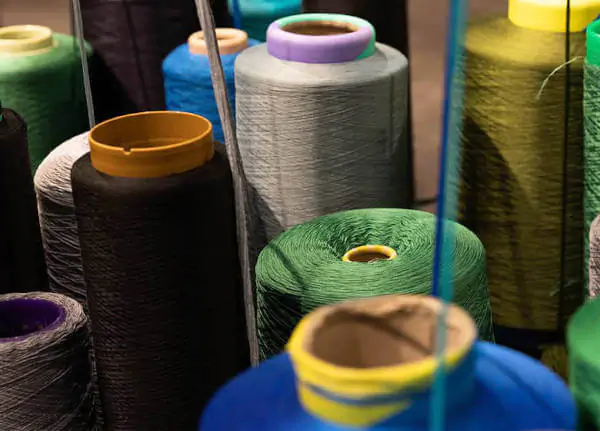
The Martindale Fabric Rating Explained
This internationally recognised upholstery fabric test rates a fabric according to the number of times discs can oscillate sandpaper or wool across the fabric before it starts to show distress or wear and tear. The results are given as the number of thousands of rub cycles completed, and they are measured in 5,000 cycle intervals. The higher the score the more cycles the fabric can withstand and the more durable the fabric.
When looking at the Martindale rating of a fabric the following generally accepted guidelines provide a starting point:
- Delicate Usage: 10,000 cycles (i.e. a Martindale score of 10,000) or less. Fabric with this rating is suitable for decorative uses such as accent cushions, curtains, drapes, blinds and similar.
- Light Usage:10,000 to 15,000 cycles. Fabrics in this range are likely to be a more delicate yarn, for example silks, or constructed more delicately. Fabric with a Martindale rating falling in this range may be suitable for occasional use furniture, such as ornamental seating or bedroom armchairs.
- Moderate Usage: 25,000 to 30,0000. Fabric falling into this range is likely to be suitable on furniture which will have moderate use which would cover most household furniture.
- Heavy Usage: 30,000 and above. Fabric falling in this category will be more durable and will durable enough for use on commercial use furniture, or furniture which will be subject to heavy use. Many fabric with higher ratings may be marketed as Contract Upholstery, in addition to durability these fabrics are likely to have higher fire retardancy ratings (this is explained in a little more detail below).
When choosing your upholstery fabric you can always use a fabric with a higher Martindale rating than your planned usage, for example, there is nothing to stop you using a Contract Upholstery fabric on furniture around your home, even if it is primarily for decorative use (there are some beautiful contract upholstery fabrics on the market). However, you should try to avoid using an upholstery fabric with a lower Martingale rating than its intended use because the fabric may not last and is likely mark and fray and show early signs of rubbing and use.
-
The Wyzenbeek Fabric Rating Explained
- The Wyzenbeek test, also known as the 'Double Rub Test' is a test for abrasion which rubs along the weft and weave of the fabric. The weft is the long threads first mounted on a loom, these threads run the entire length of the fabric. The weave is the technical name for the threads which run horizontally across the fabric, so they do not run the length of the fabric.
The Wyzenbeek test requires mounting the fabric in a frame and holding it stationary whilst it is rubbed by either a cotton duck cloth (a heavy linen canvas) or a wire mesh cloth, the two types of rub is why it is also called the double rub test.
Testing a fabric with wire mesh, as opposed to the duck cotton, is reserved for more heavy-duty fabrics. As you would expect wire mesh is much more abrasive so the scores for a wire mesh test are lower than those for a duck cotton test. However, a lower score in a wire mesh test may still mean the fabric is considered more durable than a fabric with the equivalent score from a duck cotton test, for example, any fabric with a score above 15,000 double rubs (wire test) or 30,000 double rubs (cotton test) is considered highly abrasion resistant.
Similar to the Martindale test scores are given in 5,000 cycles.
- When looking at Wyzenbeek rating of a fabric the following generally accepted guidelines provide a starting point:
-
- Delicate Usage: 3,000 double rubs cycles (i.e. a duck cotton score of 3,000) or less. Fabric with this rating is suitable for decorative uses such as accent cushions, curtains, drapes, blinds and similar.
- Light Usage: 3,000 to 9,000 double rubs. Fabrics in this range are likely to be a more delicate yarn, for example silks, or constructed more delicately. Fabric with a Martindale rating falling in this range may be suitable for occassional use furniture, such as ornamental seating or bedroom armchairs.
- Moderate Usage: 9,000 to 15,000 double rubs. Fabric falling into this range is likely to be suitable on furniture which will have moderate use which would cover most household furniture.
- Heavy Usage: 30,000 and above double rubs. Fabric falling in this category will be more durable and will durable enough for use on commercial use furniture, or furniture which will be subject to heavy use. Many fabric with higher ratings may be marketed as Contract Upholstery, in addition to durability these fabrics are likely to have higher fire retardancy ratings (this is explained in a little more detail below).
-
Limits of the Martindale and Wyzenbeek Tests
- There are two other points to keep in mind in relation to the Martindale and Wyzenbeek ratings:
-
- A high Martindale score does not mean a fabric will not suffer from visible wear and tear, the test is instead a measure of the integrity of the fabric. A high Martindale score means even if the fabric has signs of rubbing on the surface the integrity of the fabric has not been impacted by the abrasion test.
- Neither the Martindale score or Wyzenbeek rating have any bearing on other environmental factors which can affect the appearance and durability of a product, such as cleaning chemicals, UV or sunlight exposure, pet scratching, spills, scuffs and scrapes.
Understanding Fabric Thread Count
Another textile specification which is relevant to the durability of a fabric is the thread count, this is applicable to all woven fabrics. The thread count refers to the number of threads per square inch of fabric, with a higher thread count meaning the fabric yarns are more tightly woven. You may have come across the thread count if you have ever purchased cotton linen for your bed. The higher the thread count the more tightly woven the fabric making the fabric more durable. Luxury fabrics are likely to have a higher thread count than their cheaper counterparts, you may also be familiar with thread counts when brands will. A higher thread count may also make a fabric more resistant to damage from pet scratching, although there is no fabric which can really be stated to be scratch proof or pet proof.
One point to note with thread count is that it is of limited use unless you are comparing two fabrics made from the same material, different threads have different thicknesses, for example silk thread is much finer than wool yarn so they cannot be packed as tightly as each other.<
Fabric Quality
If you are looking for greater durability in your upholstery fabric you should also consider both the quality of the fabric and the fabric brand. Some of the quality of a fabric should be apparent if you compare the Martindale scores and thread counts between fabrics but this only goes part way to appreciating the quality of a fabric. The quality of the raw materials, especially fabric dyes, can also impact the longevity of the fabric. Fabric in your home will be exposed to sunlight through windows as well as splashes and spills and cleaning. Some fabrics will stand up better to these environmental stresses than others, you should check the fabric specifications to see if there is any information for details. But as a rule of thumb higher quality fabrics from top fabric houses will generally be more durable than their cheaper counterparts, they are likely to have been made with higher quality raw materials and dyes.
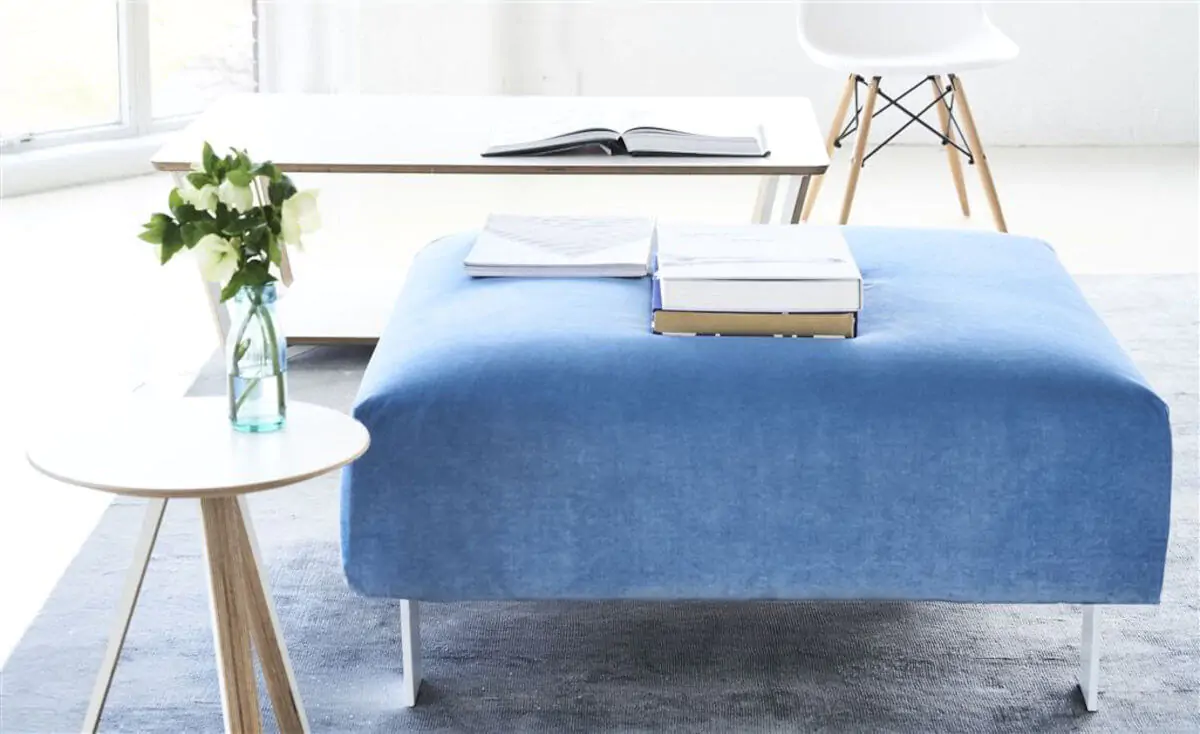
Upholstery Fabric Classification
Upholstery fabric can broadly be grouped into the following categories, each of which is suitable for a different use case:
- Not Suitable for Upholstery (or non-upholstery fabric) - not suitable for furniture but still suitable for curtains, cushions, tie-backs and pelmets,
- Decorative Upholstery Fabric - this fabric is suitable for upholstery where the furniture is primarily for decorative use, such as curtains, and cushions
- Occasional Use Upholstery Fabric - fabric of this type can be used on upholstery but should be reserved to furniture which is intended for occasional use,
- Moderate Use Upholstery Fabric (or general use upholstery fabric) - this is the most common class of upholstery fabric and fabrics in this class should be suitable for use on everyday furniture in the home,
- Contract Upholstery Fabric (or Heavy Use Upholstery Fabric) - fabrics which fall in this category tend to be more hard-wearing and should be suitable for use in commercial settings.
Different manufacturers vary how they classify their upholstery fabrics so the above is only an outline of appropriate uses for a fabric. It should be noted there can also be a wide variance of the quality of the fabrics and rub rating scores within each classification too, so for a more accurate indication you should look at the fabric specifications as a whole.
Non-Upholstery Fabric
Fabric which is not marketed as upholstery fabric will still be useful for non-upholstery usage for your own home, such as:
- Curtains
- Blinds
- Bed clothes (duvets/pillowcases)
- Cushions (for domestic use)
Decorative and Occasional Upholstery Fabric
Upholstery fabric which is categorised as occasional upholstery fabric is considered suitable for domestic upholstery and is best suited to decorative pieces, like curtains, and cushions, and on furniture which will have only light or ocassional usage. Upholstery fabrics may fall into this classification because the fabric is a more delicate fabric, such as silk, or which otherwise has a lower Martindale or Wyzenbeek scor
General Upholstery Fabric
General upholstery fabric is fabric which is considered appropriate for use on furniture which is expected to have moderate use, such as in an ordinary home setting. These upholstery fabrics will not generally be considered hard-wearing enough to withstand the pressures of heavy usage such as on furniture in commercial properties, like hotels and restaurants, or furniture in other buildings open to the public.
Contract Upholstery
Contract upholstery fabric generally has a higher flame retardancy and will be more durable than their General Upholstery counterparts.
Contract Upholstery fabric is the fabric you should choose if you are looking to use it in commercial or public setting, hotels, offices, restaurants, bars etc. Essentially, anywhere you carry out business or have open to the public, such as receptions, waiting areas, or break-out areas at work.
Upholstery Fire Resistance Requirements
Each country, and some local bodies, will set laws or requirements about the safe use of fabrics for upholstery. If you plan on using fabric for upholstery, you must ensure you comply with any applicable fire regulations. For example, any furniture you buy from us, or any bespoke made-to-measure items we supply will comply with the appropriate UK standards. However, if you intend to upholster something yourself you should always check your local and national regulations.
As a starting point for understanding compliance in the UK consider the following safety note (which is not intended to be legal advice or a definitive statement of the law):
- upholstery originally made after 1950, is subject to the Furniture and Furnishings (Fire Safety) Regulations which you must comply with when re-covering upholstered furniture, including sofas, chairs, nursery furniture and headboards.
- curtains, blinds, bed covers, and cushions should generally fall outside of these regulations unless used in a commercial or public setting.
- additional rules and requirements apply to the use of products in commercial settings, public buildings, and other vulnerable interiors such as yachts, hotels, nursing homes etc. These rules are often complex and vary according to the material, use case and setting. Whilst you may find guidance online we recommend instructing a professional upholsterer who knows the applicable regulations or seeking professional advice.
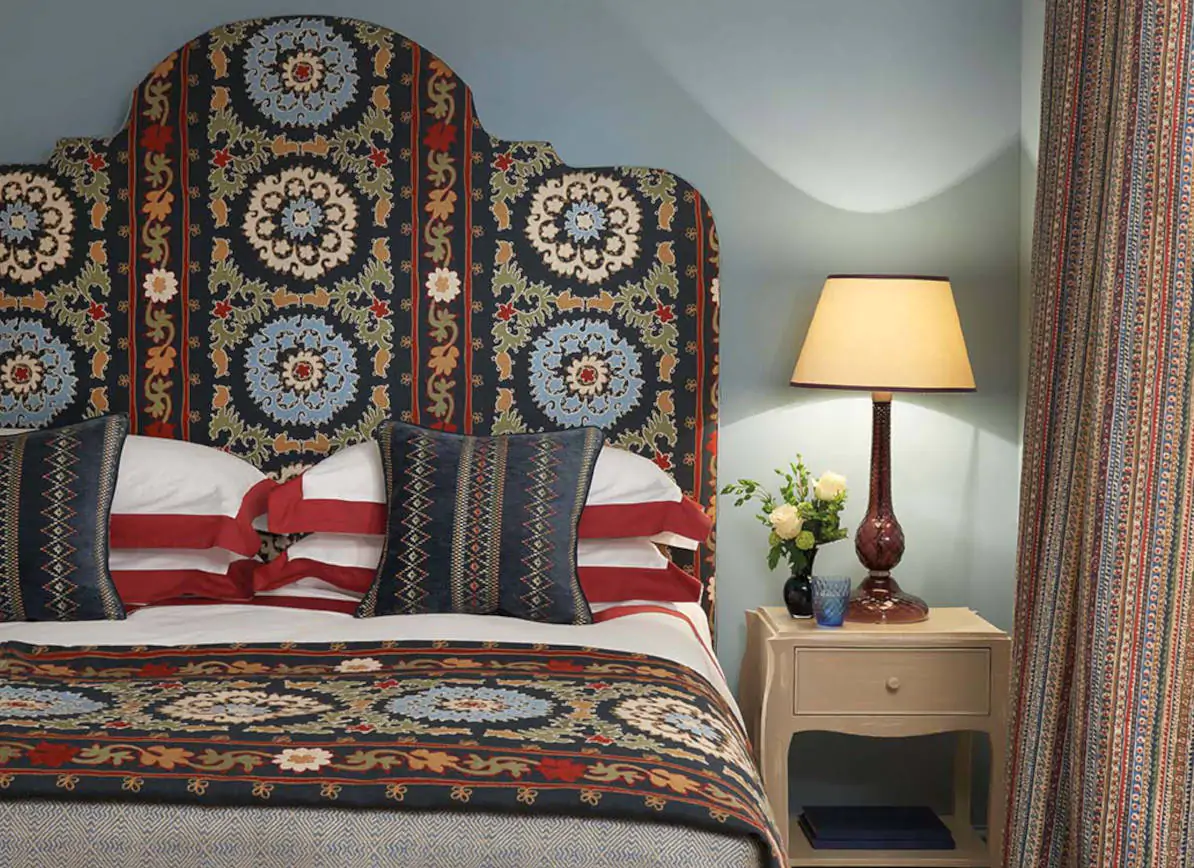
Fire Retardancy Ratings
The fire retardancy of fabrics is given by the manufacturer and can be found in the product specification section of the product display page. As general guidance you should look for the following ratings:
- Not Rated/Unrated - This means the fabric has not been tested to assess its fire resistance. These fabrics are unlikely to be suitable for use for upholstery unless they are treated to make them fire retardant. These treatments are quite straightforward, the fabric is either coated or backed with a fire resistant layer, but this process will not be suitable for all fabrics (for example fine fabrics, voiles, polyesters, acetates and some velvets).
- Requires a Schedule 2 Barrier Cloth - This means the fabrics can be applied to upholstered items only if the item is first covered in a fire resistant barrier cloth known as a Schedule 3 Interliner. The test for this fabric assesses the fire resistance of the fabric by simulating a smouldering cigarette resting on the fabric (for example in the UK this would be to British Standard 5852 PART 1 IGN 0 Cigarette, but there are similar standards for other parts of the world and these should be included in the fabric specifications). This test and requirement is typically applied to fabrics which contain at least 75% natural fibres (e.g. cotton, linen, viscose, modal, silk and wool).
- Match Tested - This means the fabrics have been laboratory tested for their resistance to withstanding a naked flame. Match tested upholstery fabric meets the regulations for ordinary domestic upholstery (at least in the UK) but is not suitable for use for fabrics which will be used in commercial premises, public environments, and other areas subject to special regulations.
- Crib 5 - This means the fabric has been laboratory tested and certified to meet British Standard (BS5852:1990), and may well also meet similar standards in other jurisdictions. This fabric is deemed to be suitable for all upholstery and particularly in areas of risk such as public buildings.
Further Help on Fire Retardancy
If you are unsure about the rules and need further help you should consider using a professional upholsterer, they will advise you on the appropriate standards and confirm whether a fabric is suitable. Upholsterers can also arrange for any additional coatings, use appropriate barrier layers, and appropriate fillings. Alternatively, if you want to do the upholstery yourself you should seek appropriate guidance and advice. As a starting point you may find it useful to contact a local fire officer, or health and safety professional, or your local council they may be able to advise you or point you in the right direction. Guidance and advice is also likely to be published on government websites, for example https://www.gov.uk/government/organisations/department-for-business-energy-and-industrial-strategy.
Purchasing from TM Interiors
Furniture and made-to-measure items supplied by TM Interiors will comply with the UK regulations for domestic usage as standard. If you are subject to different regulations, or want to purchase furniture or made-to-measure products from us for use in a commercial or public setting, let our customer support team know when placing the order and we can discuss any requirements with you. We can arrange for fabrics to be fire treated, ensure appropriate barrier cloth is used, and recommend suitable alternative fabrics if needed.
Latest Luxury Upholstery Collections
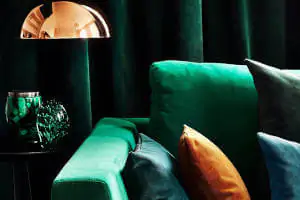
Linwood Omega Fabric Collection
A range of sumptuous richly coloured durable, stain-resistant velvets made from polyester retaining the look and feel of cotton velvet.
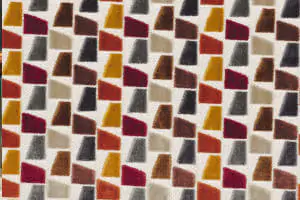
Casamance Paddington Fabric Collection
A playful range with a variety of fabric designs smart stripes, bold geometrics, and other abstracts, including the striking Bebop fabric.
TM Interiors
Need help choosing upholstery fabrics?
If you need help choosing the perfect upholstery fabric call our customer support team on +44 (0)1733 230 499 or email: info@tm-interiors.co.uk

Further Information
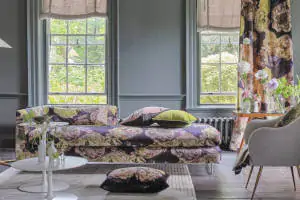
General Upholstery Fabric
Browse our collection of contract upholstery fabrics.
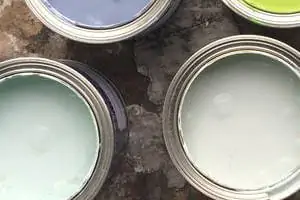
How to Paint a Wall
A simple guide on how to paint a wall in 10 easy steps
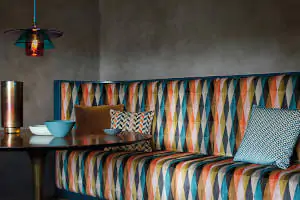
Contract Upholstery Fabric
Browse our collection of contract upholstery fabrics.



